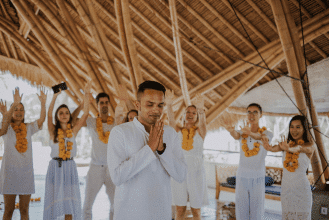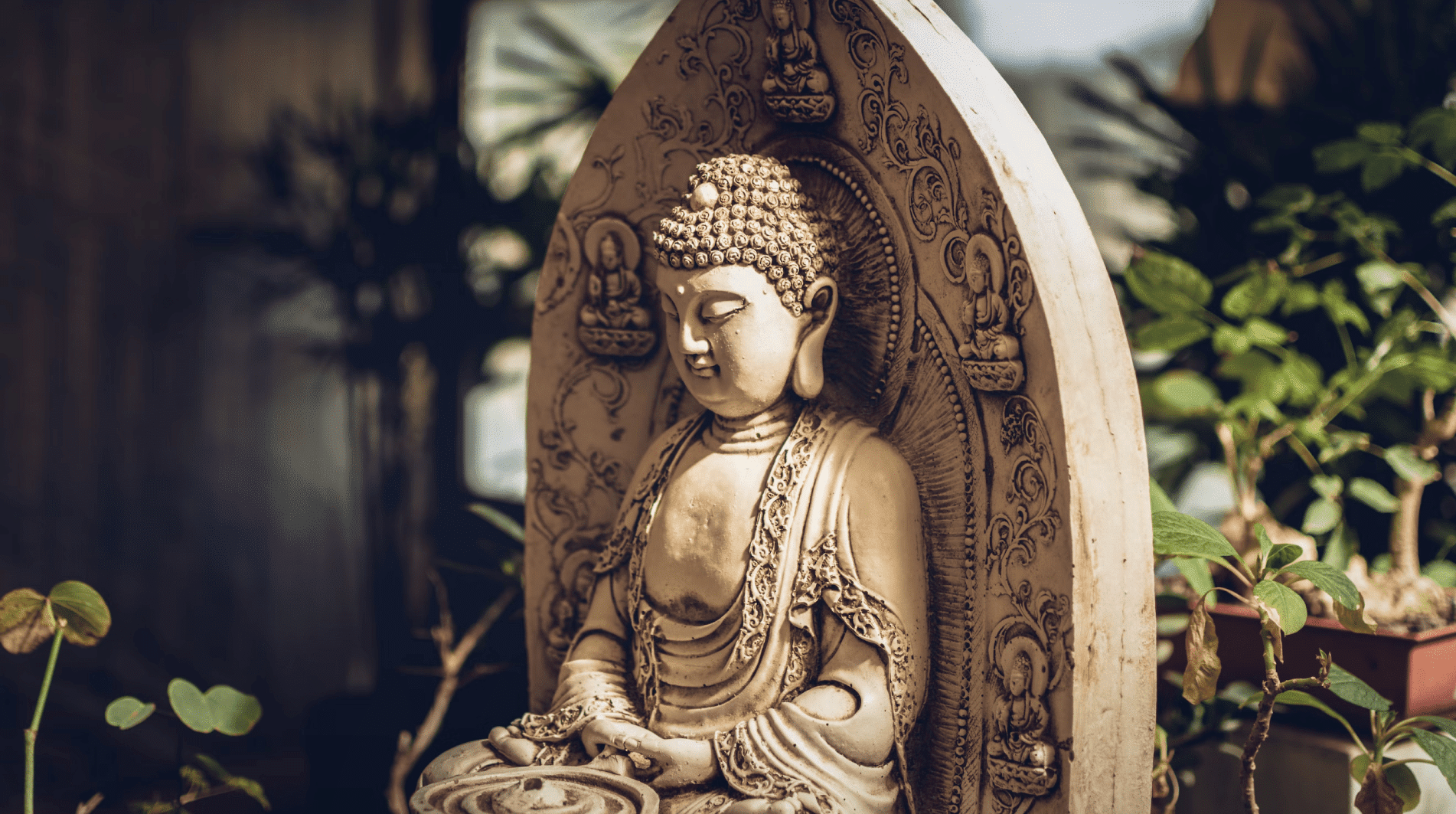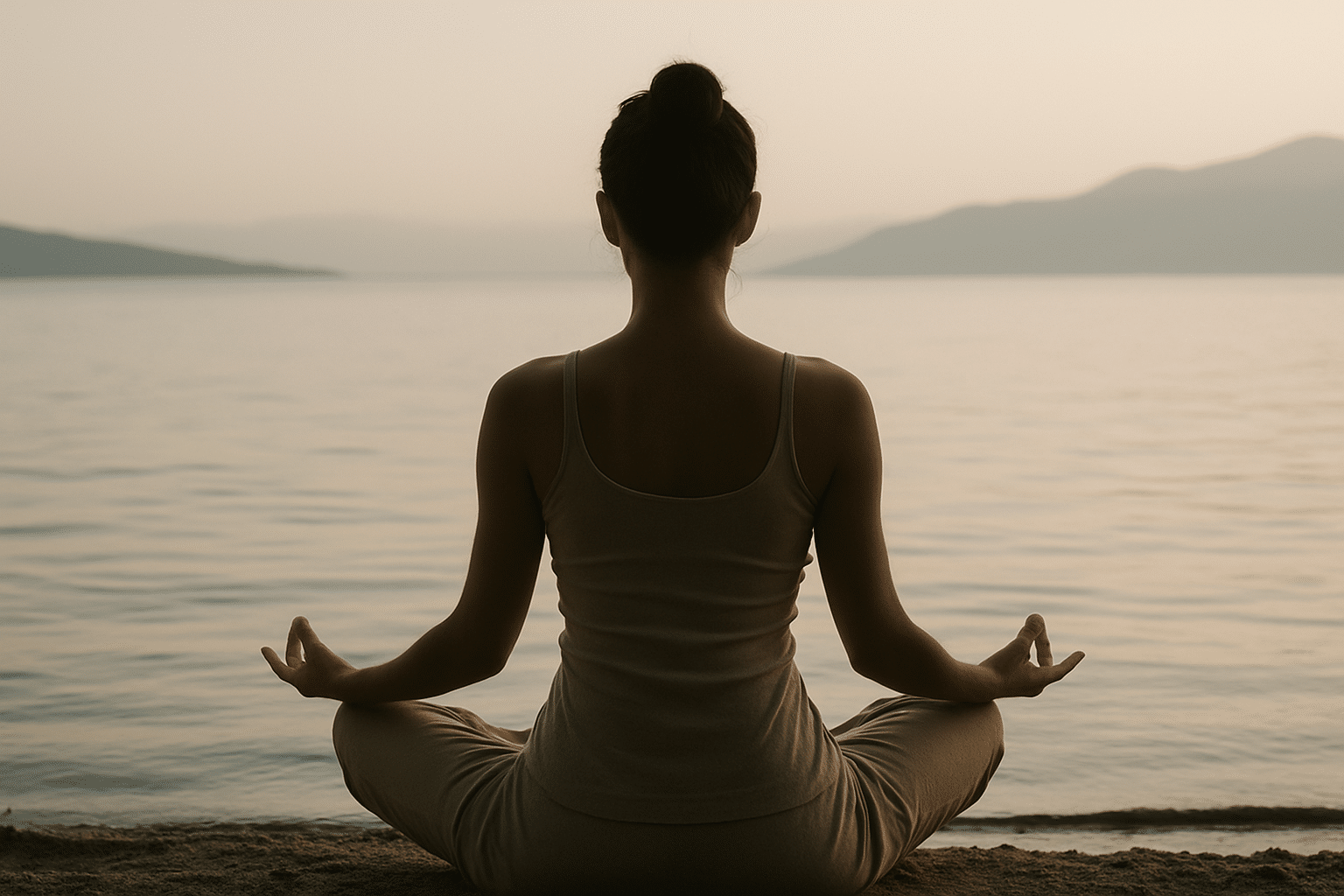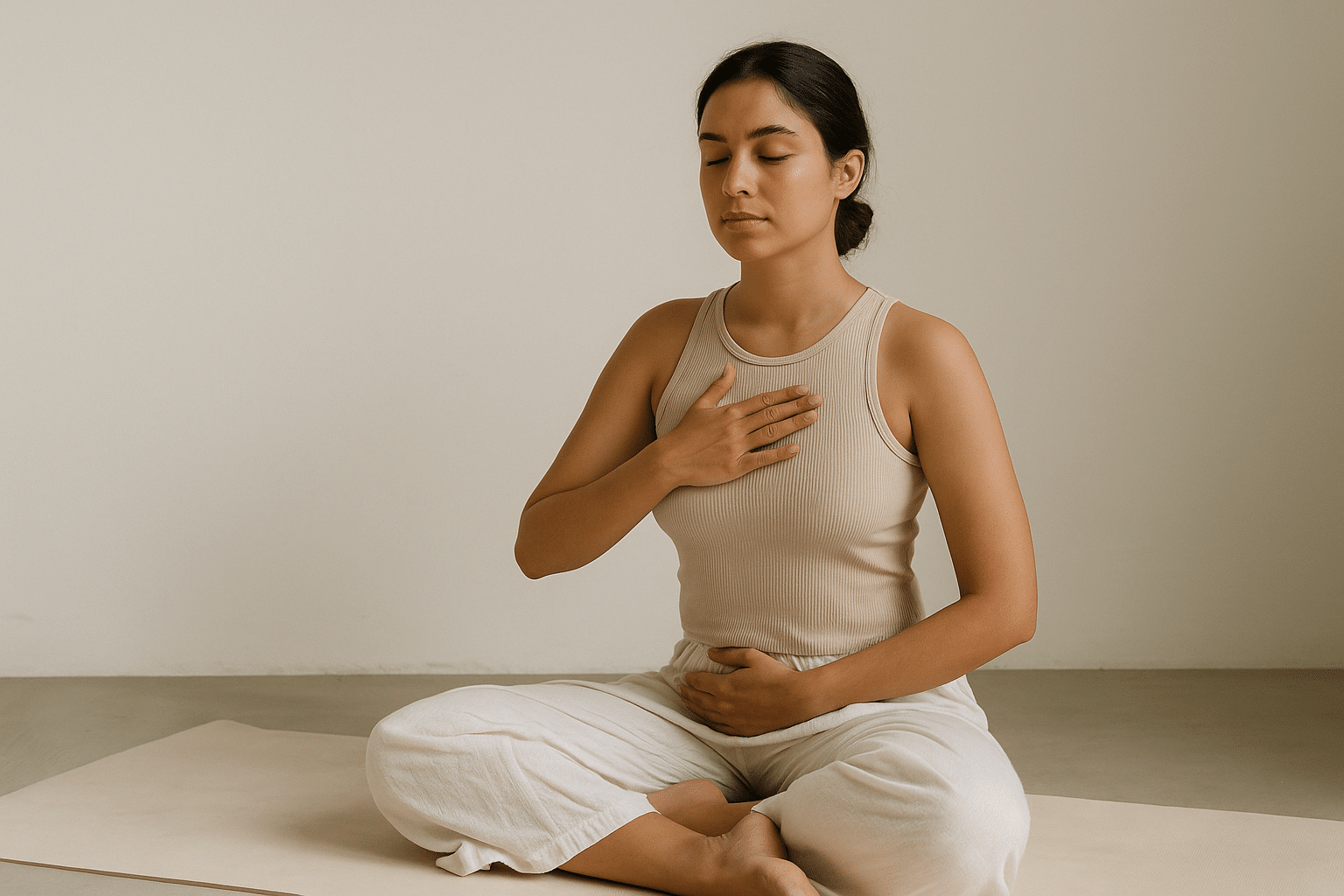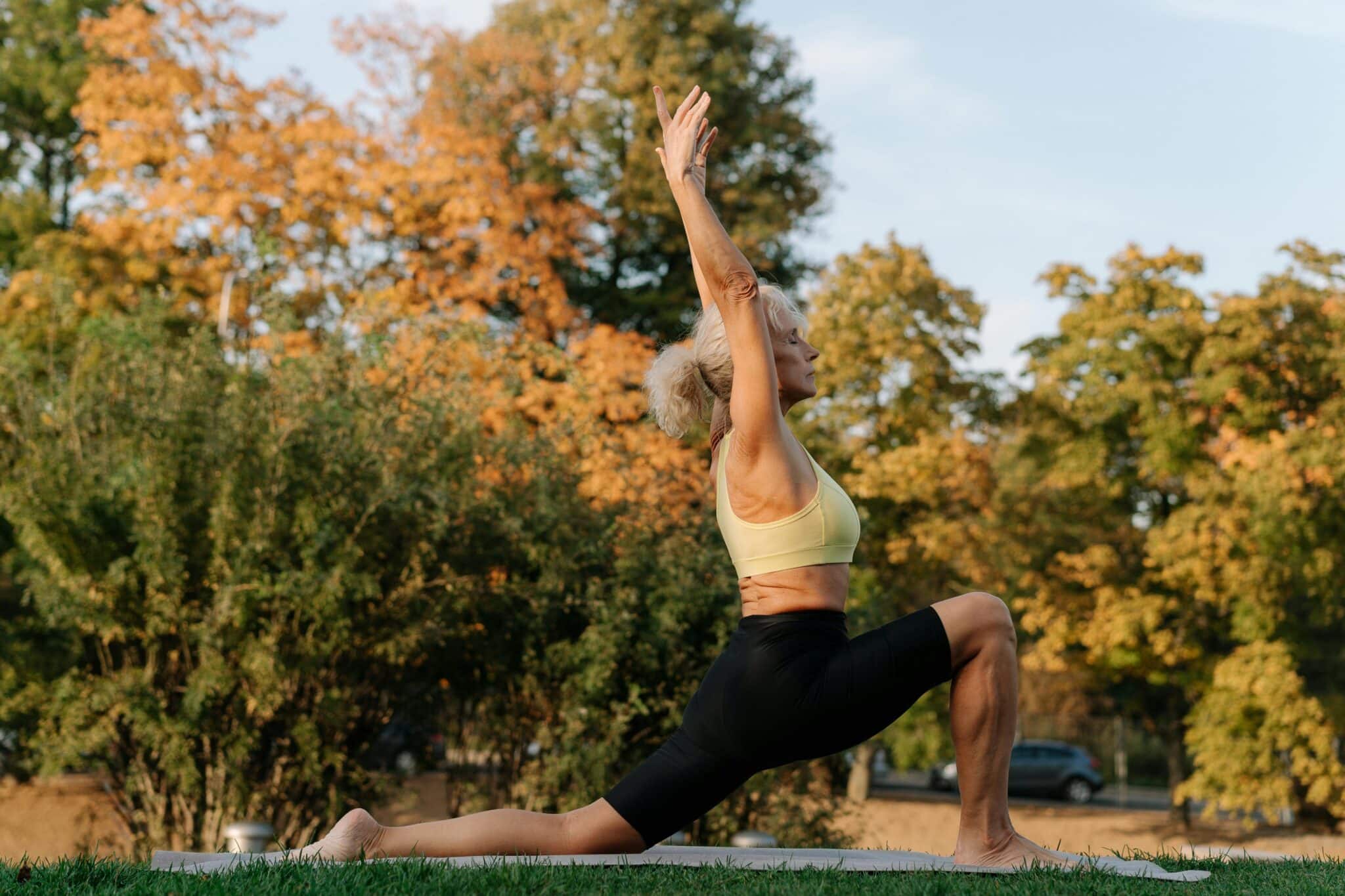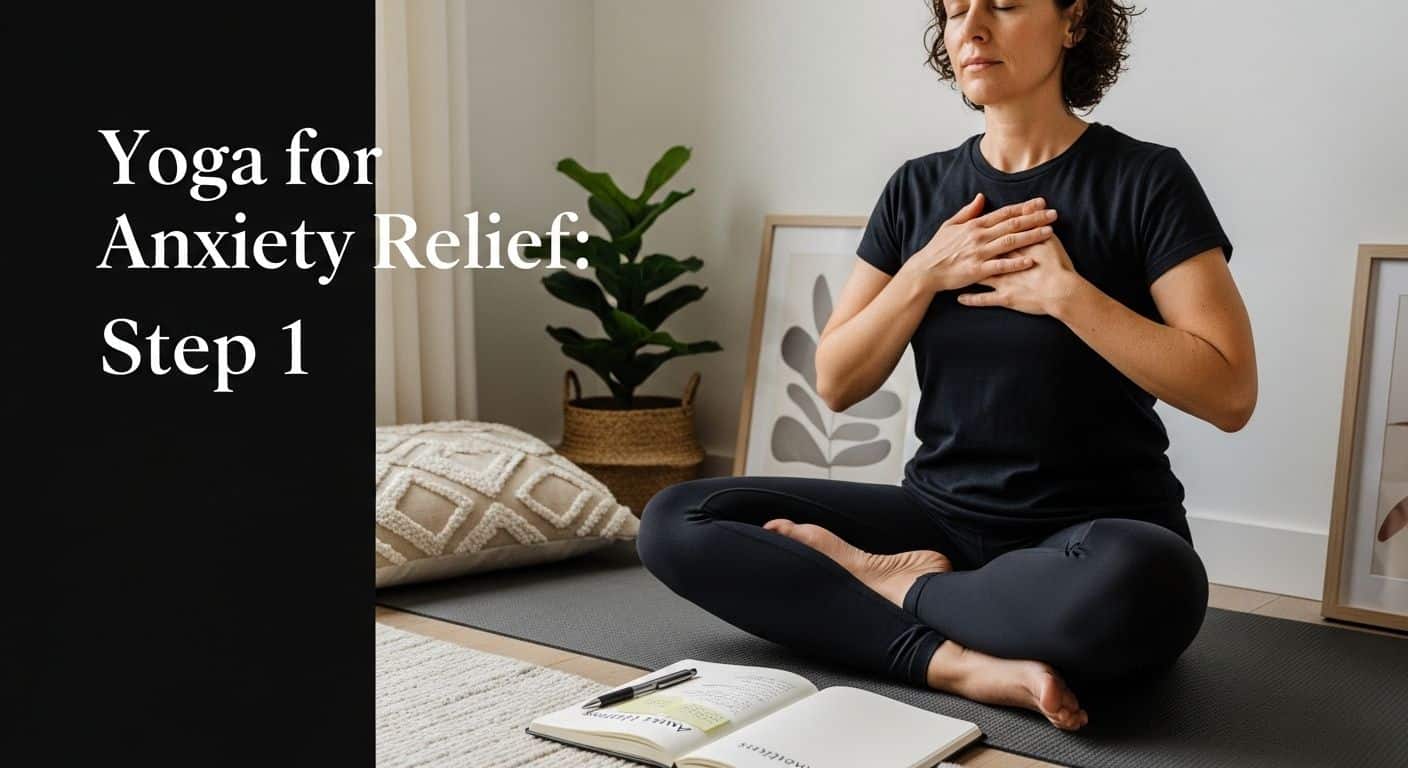
Vinyasa yoga isn’t just about striking poses or going through routines. It’s a practice where every movement flows with your breath, creating a unique rhythm that feels almost like a dance. Yet most people are surprised to learn that regular vinyasa yoga can help reduce stress and improve emotional regulation according to clinical studies. Even better, the most powerful transformations from vinyasa often happen off the mat, as its mindful approach sneaks into daily life in ways you might never expect.
Table of Contents
- Understanding The Foundations Of Vinyasa Yoga
- Key Benefits And Unique Features Of Vinyasa
- How To Practice And Teach Vinyasa Safely
- Vinyasa Yoga In Modern Wellness And Retreats
Quick Summary
| Takeaway | Explanation |
|---|---|
| Breath is essential in Vinyasa | Movement and breath synchronization create a transformative practice that fosters physical and mental well-being. |
| Vinyasa adapts to individual needs | The practice allows modifications based on personal fitness levels and goals, making it accessible to everyone. |
| Mindfulness enhances emotional wellness | Regular practice promotes mindfulness, reducing anxiety and improving emotional resilience through breath awareness and movement. |
| Safety measures are crucial | Practitioners should adhere to safety protocols, including proper alignment and personal limitations, for a sustainable practice. |
| Vinyasa supports modern wellness approaches | Incorporating Vinyasa into wellness retreats and corporate programs addresses stress management and enhances overall well-being. |
Understanding the Foundations of Vinyasa Yoga
Vinyasa yoga represents a dynamic and transformative approach to yoga practice that goes far beyond simple physical movement. At its core, vinyasa yoga is a fluid, breath-synchronized method of practice that connects each movement with intentional breathing, creating a meditative and holistic experience of body and mind.
The Breath Movement Connection
The fundamental principle of vinyasa yoga lies in its seamless integration of breath and movement. Unlike static yoga styles, vinyasa creates a continuous flow where each posture transitions smoothly into the next, guided by the rhythm of inhalation and exhalation. Learn more about yoga’s philosophical foundations to understand this deeper connection.
According to a pilot study in the International Journal of Yoga Therapy, this synchronized approach offers significant benefits. The research demonstrated that regular vinyasa practice can lead to acute improvements in mood and emotional regulation, particularly among young adults experiencing stress.
Philosophical Underpinnings of Vinyasa
Vinyasa yoga draws from ancient yogic traditions, translating literally to “to place in a special way” in Sanskrit. This principle reflects a deliberate, mindful approach to movement where each transition is as important as the pose itself. Practitioners are encouraged to maintain full awareness during practice, transforming physical movement into a moving meditation.
A doctoral dissertation from the University of Arkansas further illuminated the practice’s potential, revealing that consistent vinyasa yoga interventions can significantly reduce stress, combat anxiety, and improve overall mental well-being. The research highlighted how the intentional sequencing of movements creates a holistic healing experience that extends beyond physical exercise.
Structural Characteristics of Vinyasa Practice
Vinyasa yoga is characterized by its intelligent sequencing and adaptability. While many yoga styles follow rigid structures, vinyasa allows for creative and personalized approaches. Typical sequences often include sun salutations, standing poses, balancing postures, and floor work, all linked through conscious breathwork.
Key elements that distinguish vinyasa include:
- Breath Synchronization: Every movement is precisely matched with either an inhale or exhale
- Dynamic Transitions: Poses flow seamlessly, creating a dance-like quality
- Individualized Modification: Sequences can be adapted to practitioners’ skill levels and physical capabilities
By embracing these foundational principles, vinyasa yoga offers a profound pathway to physical strength, mental clarity, and spiritual awareness. It invites practitioners to explore movement as a form of meditation, transforming traditional exercise into a deeply introspective journey.

Key Benefits and Unique Features of Vinyasa
Vinyasa yoga stands out in the expansive world of yoga practices through its remarkable combination of physical dynamism and mental engagement. Unlike static yoga styles, vinyasa offers a comprehensive approach to wellness that integrates movement, breath, and mindfulness in a seamless, transformative experience.
Holistic Physical and Mental Benefits
Research from the International Journal of Yoga highlights vinyasa’s significant impact on overall health. The practice supports improved cardiovascular function, muscular strength, flexibility, and stress reduction. Practitioners experience a unique form of exercise that simultaneously challenges the body and calms the mind.
The physiological benefits extend beyond traditional fitness metrics. Learn more about advanced yoga training techniques that complement vinyasa’s comprehensive approach. Regular practitioners often report enhanced body awareness, improved posture, and increased metabolic efficiency.
Adaptive and Personalized Practice
One of vinyasa’s most compelling features is its inherent adaptability. Unlike rigidly structured yoga styles, vinyasa allows practitioners to modify sequences based on individual fitness levels, physical limitations, and personal goals. This flexibility makes it accessible to beginners and challenging for advanced yogis.
The practice’s intelligent design enables seamless transitions between poses, creating a continuous movement that resembles a choreographed dance. Each sequence can be thoughtfully crafted to target specific muscle groups, address individual fitness objectives, or focus on particular therapeutic outcomes.
Mental and Emotional Wellness
Beyond physical benefits, vinyasa yoga serves as a powerful tool for mental and emotional regulation. The synchronized breath and movement create a meditative state that promotes mindfulness, reduces anxiety, and enhances emotional resilience. Practitioners develop a heightened sense of present-moment awareness, learning to navigate both physical challenges and emotional landscapes with greater equanimity.
Key unique features of vinyasa include:
- Dynamic Flow: Continuous movement that maintains physical and mental engagement
- Breath Consciousness: Intentional breathing that synchronizes with each movement
- Mind-Body Integration: A practice that harmonizes physical exertion with mental clarity
By embracing these multifaceted dimensions, vinyasa yoga transcends traditional exercise paradigms. It offers a holistic approach to wellness that nurtures physical strength, mental clarity, and emotional balance, making it an increasingly popular choice for individuals seeking comprehensive personal development.
Below is a table summarizing the unique features of Vinyasa yoga, as discussed in this section:
| Feature | Description |
|---|---|
| Dynamic Flow | Continuous movement, maintaining engagement of both body and mind |
| Breath Synchronization | Intentional matching of breath with each movement |
| Individual Modification | Sequences and poses are adapted according to practitioner needs and capabilities |
| Mind-Body Integration | Harmonizes physical effort with increased mental clarity |
| Meditative State | Breath and movement synergy creates mindfulness and present-moment awareness |
How to Practice and Teach Vinyasa Safely
Safety is paramount in vinyasa yoga, requiring a comprehensive approach that protects both practitioners and instructors from potential physical risks while maximizing the practice’s transformative potential. Understanding and implementing strategic safety protocols is essential for creating a sustainable and beneficial yoga experience.
Essential Safety Foundations for Practitioners
Practitioners must prioritize body awareness and personal limitations when engaging in vinyasa yoga. According to the American College of Sports Medicine, identifying qualified instructors with comprehensive training in anatomy and physiology is crucial for ensuring participant safety.
Key safety considerations include:
- Proper Alignment: Maintaining correct body positioning to prevent strain
- Individual Modification: Adapting poses to personal physical capabilities
- Breath Awareness: Using breath as a guide to prevent overexertion
Learn about yoga certification requirements to understand the depth of knowledge needed for safe practice.
Professional Teaching Standards and Risk Management
For yoga instructors, safety transcends personal practice. The National Center for Biotechnology Information emphasizes the necessity of comprehensive training and established safety guidelines to prevent potential adverse events during yoga sessions.
Critical teaching safety protocols include:
- Conducting thorough pre-class health screenings
- Understanding individual student limitations
- Providing clear, precise movement instructions
- Offering multiple pose modifications
- Maintaining professional boundaries
Medical Considerations and Precautionary Approaches
Prior to beginning any vinyasa practice, practitioners should consult healthcare professionals, especially those with pre-existing medical conditions. Instructors must develop keen observational skills to recognize potential physical strain or inappropriate movements.
Recommended safety strategies involve:
- Implementing graduated learning progressions
- Creating inclusive, supportive class environments
- Encouraging students to listen to their bodies
- Developing emergency response preparedness
The Yoga Alliance International’s Code of Practice mandates that registered teachers prioritize student well-being through comprehensive safety protocols and professional standards.
By embracing these comprehensive safety frameworks, vinyasa yoga practitioners and instructors can create transformative experiences that honor individual physical capabilities while minimizing potential risks. The practice becomes not just a physical exercise, but a mindful journey of self-discovery and holistic wellness.
Below is a checklist table summarizing practitioner and instructor safety protocols mentioned in this section:
| Safety Protocol | Practitioner | Instructor |
|---|---|---|
| Maintain body awareness | ✔️ | |
| Respect individual limitations | ✔️ | ✔️ |
| Proper alignment | ✔️ | ✔️ |
| Offer/Practice pose modifications | ✔️ | ✔️ |
| Use breath awareness | ✔️ | ✔️ |
| Conduct pre-class health screenings | ✔️ | |
| Give clear movement instructions | ✔️ | |
| Maintain professional boundaries | ✔️ | |
| Emergency preparedness | ✔️ |
Vinyasa Yoga in Modern Wellness and Retreats
Vinyasa yoga has emerged as a transformative force in contemporary wellness culture, transcending traditional fitness paradigms to become a holistic approach to personal development and mental health. Modern practitioners increasingly view vinyasa not just as an exercise routine, but as a comprehensive lifestyle strategy for achieving physical, mental, and emotional balance.
Wellness Retreats and Immersive Experiences
Contemporary wellness retreats have increasingly integrated vinyasa yoga as a cornerstone practice, recognizing its unique ability to blend physical movement with mindfulness. Explore top wellness retreat destinations that offer transformative vinyasa experiences in stunning natural environments.
These immersive retreats provide participants with an opportunity to dive deep into their practice, moving beyond daily limitations and exploring personal growth through structured yet fluid yoga experiences. Typical retreat programs incorporate multiple daily vinyasa sessions, complemented by meditation, nutrition workshops, and holistic wellness activities.
Corporate Wellness and Stress Management
Organizations are recognizing vinyasa yoga’s potential in addressing workplace wellness challenges. Companies are increasingly implementing yoga programs that focus on vinyasa’s dynamic approach to stress reduction and mental resilience. The practice offers employees a structured method to manage professional pressures, improve focus, and enhance overall emotional regulation.
Key corporate wellness benefits include:
- Improved Employee Productivity: Reduced stress levels and enhanced mental clarity
- Physical Health Enhancement: Counteracting sedentary work environments
- Team Building: Shared mindfulness experiences that promote collective well-being
Technological Integration and Accessibility
Digital platforms have revolutionized vinyasa yoga’s accessibility, allowing practitioners to engage with high-quality instruction from global experts. Online platforms and mobile applications now offer personalized vinyasa experiences that can be practiced anywhere, breaking traditional geographical and time constraints.
Modern vinyasa practitioners benefit from:
- Personalized Virtual Classes: Tailored instruction matching individual skill levels
- On-Demand Practice Options: Flexibility to practice at convenient times
- Global Community Connection: Connecting with international yoga communities
By embracing technological innovations and holistic wellness approaches, vinyasa yoga continues to evolve, offering a dynamic, adaptable practice that meets the complex wellness needs of contemporary individuals. It represents more than a physical discipline—it is a comprehensive approach to personal transformation and mindful living.

Frequently Asked Questions
What is Vinyasa yoga?
Vinyasa yoga is a dynamic practice that synchronizes breath with movement, creating a fluid and meditative experience. It involves transitioning between poses in a seamless flow, promoting both physical strength and mental clarity.
How can Vinyasa yoga help with stress and emotional regulation?
Research has shown that regular Vinyasa yoga practice can significantly reduce stress levels, improve mood, and enhance emotional regulation by fostering mindfulness and present-moment awareness through breath and movement synchronization.
Is Vinyasa yoga suitable for beginners?
Yes, Vinyasa yoga is adaptable and can be modified based on individual fitness levels and goals, making it accessible for beginners. Practitioners are encouraged to listen to their bodies and adjust poses accordingly.
What are the safety measures to consider when practicing Vinyasa yoga?
It’s essential to maintain proper alignment, be aware of personal limitations, and use breath to guide movement. Practitioners should seek qualified instructors and consider consulting healthcare professionals if they have pre-existing conditions.
Transform Your Vinyasa Practice Into Professional Mastery
Have you discovered how connecting breath with movement in vinyasa yoga can deepen your physical and mental strength, but still find yourself wondering how to bring these benefits to others or elevate your own practice further? Many students and teachers struggle to create safe, adaptive, and truly mindful vinyasa sequences that support greater emotional wellness and personal growth. Achieving mastery requires true expertise in teaching standards, anatomy, and holistic yoga philosophy—foundations highlighted throughout this guide.

Take your next step with confidence. At Yoga East West, our yoga alliance-accredited teacher training immersions in Bali, Costa Rica, and Thailand are designed to bridge the gap between personal transformation and professional certification. You will learn from respected masters, develop advanced sequencing and adjustment skills, and gain the confidence to guide students safely. Ready to teach or refine your vinyasa style? Explore how our comprehensive yoga teacher trainings can elevate your journey now. Spots for the next season are limited—secure yours today.
Recommended
- Yoga Teacher Training 101: What You Need to Know | East+West Yoga
- 9 Tips to Stand Out as a Yoga Teacher in the Modern Job Market
- Should You Use Sanskrit to Teach Yoga? 13 Reasons Why It Can Elevate Your Classes
- The Best Yoga Teacher Trainings In Germany | East+West Yoga
- Try An Online Yoga Class – It’s A Growing Trend | Book On Plentiful


